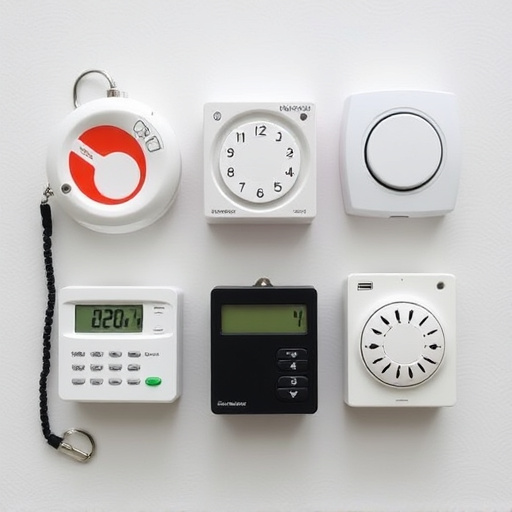Remote monitoring technology has transformed personal safety with powerful yet compact personal alarm devices that produce up to 120 dB sounds, deter threats, and attract attention. These devices integrate GPS tracking, cellular connectivity, and activation mechanisms for swift emergency responses. When choosing, prioritize decibel level, ease of use, long battery life, water resistance, and smartphone app integration. Rigorous testing ensures efficacy and reliability in diverse scenarios. Key considerations include cutting through ambient noise, durability, battery life, and user-friendliness.
Personal protection has evolved with the advent of remote monitoring technology, offering unprecedented peace of mind. This article explores how compact personal alarm devices, equipped with remote capabilities, enhance safety without compromising portability. We delve into the latest innovations in remote monitoring, highlighting key features that make these devices essential tools for personal security. Additionally, we test and evaluate the loudest compact personal alarm devices to ensure their effectiveness as a game-changer in emergency situations.
- Understanding Remote Monitoring Technology in Personal Protection
- Key Features of Compact Personal Alarm Devices for Maximum Safety
- Testing and Evaluating Loudest Personal Alarms: Ensuring Effectiveness
Understanding Remote Monitoring Technology in Personal Protection
Remote monitoring technology has transformed personal protection, empowering individuals with a newfound sense of security. At the heart of this evolution lies compact personal alarm devices designed to emit ear-splitting sounds, with some of the loudest reaching up to 120 decibels—enough to deter potential threats and attract attention swiftly. These innovative tools seamlessly integrate advanced communication features, allowing users to send distress signals or notify emergency contacts with just a press of a button.
The technology behind these devices involves a combination of GPS tracking, cellular connectivity, and sophisticated alarm systems. When activated, they transmit real-time location data and alerts to monitoring centers or designated recipients. This immediate notification system enables rapid response times, ensuring help arrives promptly during emergencies. With compact designs that fit easily in pockets or purses, these personal alarms offer discreet yet potent protection for individuals navigating unfamiliar environments.
Key Features of Compact Personal Alarm Devices for Maximum Safety
When choosing a compact personal alarm device, consider its key features for maximum safety. One of the most crucial aspects is decibel level; the loudest compact personal alarm device is often preferred as it can startle potential attackers and draw attention to your location. Look for models that exceed 120 decibels for optimal effectiveness. Additionally, these devices should feature easy-to-use activation mechanisms, such as a simple button press or voice-activated triggers, ensuring you can respond quickly in an emergency.
Other notable features include long battery life, water resistance, and the ability to integrate with smartphone apps for remote monitoring. Some models even offer GPS tracking, allowing you to share your location with trusted contacts. Vibrant LED flashing is another valuable feature that enhances visibility in low-light conditions. Prioritize devices that combine these elements to provide comprehensive personal protection.
Testing and Evaluating Loudest Personal Alarms: Ensuring Effectiveness
When evaluating the loudest compact personal alarm devices, testing is paramount to ensure their effectiveness in real-world scenarios. These tiny yet powerful tools are designed to be your last line of defense in potentially dangerous situations, so their alarm volume and projection must be impressive. A device’s decibel level should ideally surpass 100 dB to ensure it can cut through ambient noise and alert bystanders or deter an attacker effectively.
During testing, consider both indoor and outdoor conditions, as well as different environments with varying levels of background noise. Drop tests, impact resistance assessments, and water-resistance evaluations are also crucial to confirm the alarm device’s durability and reliability. Moreover, examining the battery life and ease of use—including quick activation and customizable settings—ensures that the personal alarm meets all your safety needs without compromising convenience or performance.
Personal protection devices with remote monitoring, particularly the loudest compact personal alarm device, are powerful tools for enhancing safety. By understanding advanced remote monitoring technology and choosing features like GPS tracking and immediate alert systems, individuals can ensure they’re prepared in emergencies. Thorough testing of these devices guarantees their effectiveness, allowing users to feel secure while navigating potentially dangerous situations. Adopting such innovative solutions contributes to a safer, more proactive approach to personal protection.
